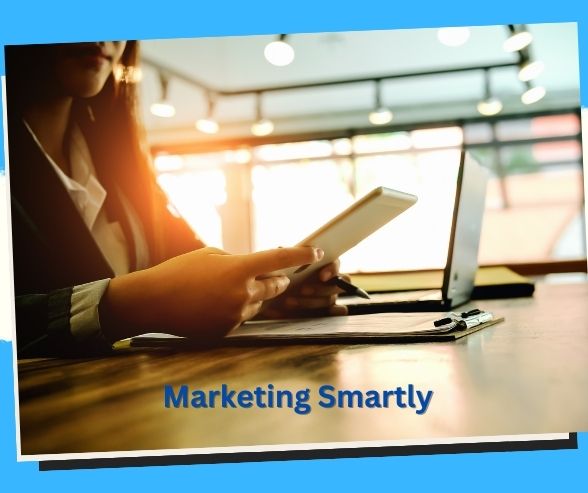💼 B2C vs. B2B Marketing: Who Holds the Winning Strategy?
It’s a face-off like no other – B2C marketing vs. B2B marketing! 🤝 Explore the key differences, approaches, and tips to excel in both domains. 📊 #MarketingFaceOff #KeyDifferences
B2C Marketing vs. B2B Marketing: Navigating Two Unique Worlds 🌍🤝
Marketing is a vibrant tapestry that weaves connections between businesses and their audiences. However, within this intricate fabric, two distinct realms exist: Business-to-Consumer (B2C) and Business-to-Business (B2B) marketing. These realms are marked by unique characteristics, strategies, and approaches, each shaped by their respective audiences’ specific needs and expectations. In this enlightening journey, we’ll explore the key differences between B2C and B2B marketing and the strategies that drive success in these fascinating worlds. 🚀🔍
**1. *Understanding B2C Marketing: The Consumer Connection* 🌟
B2C marketing, as the name suggests, revolves around the direct interaction between businesses and individual consumers. Whether it’s a smartphone, a trendy pair of sneakers, or a cozy book for a rainy day, B2C marketing is about enticing consumers to buy these products and experience personal satisfaction.
In B2C marketing, emotions often take center stage. It’s about capturing the attention and loyalty of consumers through compelling storytelling, relatable content, and eye-catching visuals. The focus is on addressing the immediate needs and desires of the consumer, satisfying their cravings for convenience, instant gratification, and an exceptional customer experience.
**2. *Understanding B2B Marketing: The Business Ecosystem* 🏢
Conversely, B2B marketing is a more complex dance involving businesses that serve other businesses. Here, the focus is not on a single consumer but on building enduring relationships with companies seeking products or services to enhance their operations.
B2B marketing often involves longer sales cycles, higher purchase values, and a multi-layered decision-making process. The key lies in demonstrating how your product or service can help the business achieve its objectives, whether cutting costs, improving efficiency, or gaining a competitive edge.
**3. *Audience Size and Complexity* 🎯
B2C marketing typically involves a much larger and more diverse audience. Your target market can span age groups, geographic locations, and cultural backgrounds. To succeed, B2C marketers must adapt their strategies to appeal to a broad spectrum of consumers, all with different needs and preferences.
Conversely, B2B marketing often has a smaller, more niche audience. Companies in the B2B realm are searching for specific solutions to specific challenges. This allows B2B marketers to focus their efforts on a more tailored approach, speaking directly to the needs and pain points of a particular business or industry.
**4. *Purchasing Decisions: Emotional vs. Rational* 💭💞
B2C marketing thrives on emotion. Consumers make purchasing decisions based on their feelings, experiences, and desires. B2C marketers tap into this by crafting resonating stories, creating memorable customer journeys, and offering products that fulfill immediate needs.
In B2B marketing, rationality rules. The need for practical, cost-effective solutions typically drives business decisions. B2B marketers must provide comprehensive information, case studies, and data-driven evidence to prove the value of their offerings.
**5. *Content and Messaging* 📚
Content in B2C marketing often leans toward the creative, visual, and engaging. It’s about captivating the consumer’s attention, telling a story, and delivering a message that’s easy to digest. B2C marketers frequently use visuals, videos, social media, and emotional appeals to make an impact.
In B2B marketing, content is more in-depth and informative. It’s about educating, providing thought leadership, and offering solutions. Long-form content, whitepapers, webinars, and expert insights are the tools of choice to demonstrate expertise and address complex challenges.
**6. *Customer Relationship and Retention* 🤗
B2C marketing frequently involves a high volume of customers, but individual transactions are often smaller. As a result, customer relationships can be shorter and less personal. However, B2C brands rely on loyalty, repeat purchases, and word-of-mouth marketing to retain customers.
In B2B marketing, building lasting relationships is paramount. B2B clients may depend on a service or product over the long term, and successful relationships are built on trust, reliability, and exceptional customer service. B2B brands aim to nurture relationships that lead to continued business and often extend into partnerships.
**7. *Sales Process and Funnel Length* 📈
B2C sales cycles are generally shorter and more straightforward. Consumers often make decisions based on a single interaction with a brand. The process involves attracting customers, converting them into buyers, and encouraging repeat business.
In contrast, B2B sales cycles can be significantly longer. Decision-making often requires buy-in from multiple stakeholders within an organization. The B2B sales funnel is more complex, involving lead generation, lead nurturing, and closing a deal that may take months or even years.
**8. *Pricing and Negotiation* 💰
B2C pricing is typically straightforward, with fixed prices and little room for negotiation. Consumers generally expect transparent, competitive pricing. However, they may respond positively to discounts, promotions, and loyalty programs.
B2B pricing can be more intricate and may involve negotiations. Prices can vary based on the required volume of products or services, contract length, or other factors. B2B buyers may expect personalized pricing based on their specific needs and terms.
**9. *Visibility and Branding* 🌆
In the world of B2C marketing, brand visibility is paramount. Building a strong, recognizable brand is essential for standing out in the crowded consumer market. B2C brands often invest heavily in advertising, social media presence, and memorable branding elements.
In B2B marketing, brand recognition remains essential but is often driven by expertise and reputation. Businesses want to work with companies known for delivering exceptional solutions and support. Significant branding elements are thought leadership, industry expertise, and a track record of success.
**10. *Social Media and Advertising* 📱📺
B2C marketing relies heavily on social media and consumer advertising. Consumers spend a significant amount of time on social platforms, and B2C brands leverage this by running targeted ads and engaging in content marketing on platforms like Facebook, Instagram, and Twitter.
B2B marketing also uses social media, but its primary focus is on professional networks like LinkedIn. B2B marketing emphasizes content creation, sharing industry insights, and building professional connections. Advertising tends to be more selective, targeting businesses through industry-specific publications, trade shows, and specialized websites.
**11. *Conversion and Metrics* 📊📈
B2C marketing often relies on short-term metrics, tracking immediate conversion rates, click-through rates, and online purchases. The focus is on swiftly attracting and converting consumers.
B2B marketing places importance on long-term metrics such as lead generation, conversion over time, and the lifetime value of a customer. The emphasis is building a pipeline of potential clients and nurturing them until they become long-term, high-value customers.
**12. *Customer Reviews and Testimonials* 👥🌟
Customer reviews and testimonials hold immense power in both B2C and B2B marketing. In B2C, positive reviews and user-generated content can significantly influence consumer decisions. Reviews serve as social proof and build trust.
In B2B marketing, the impact of testimonials is equally powerful. Businesses often seek case studies and testimonials from other companies that have successfully used a product or service. These success stories validate the value of a B2B offering.
**13. *Marketing Technology and Tools* 🛠️
Both B2C and B2B marketing benefit from various marketing tools and technologies. However, the choice of tools can vary. B2C marketing tools often prioritize e-commerce platforms, social media management, and customer relationship management (CRM) systems tailored to consumer interactions.
B2B marketing relies on tools designed for lead generation, customer relationship management, and content creation for professional audiences. The focus is building strong, data-driven relationships and providing solutions to enhance business operations.
**14. *Customer Service and Support* 🤝📞
B2C customer service often involves handling many inquiries through various channels. It focuses on providing quick responses and problem resolution. Customers expect immediate assistance.
In B2B marketing, customer support tends to be more personalized. Relationships with clients are long-term, and support may involve dedicated account managers, expert technical assistance, and customized solutions to meet specific business needs.
**15. *Return on Investment (ROI)* 📉💡
The ROI in B2C marketing is often more immediate and transaction-based. It’s about measuring the direct impact of marketing efforts on consumer purchases. ROI calculations focus on the effectiveness of campaigns in driving sales and increasing customer engagement.
In B2B marketing, ROI calculations can be more complex. They consider factors like lead generation, nurturing, and long-term customer retention. It often takes time for the full value of a B2B marketing campaign to become evident.
In Conclusion: A Beautiful Tapestry of Marketing 🧵🌟
B2C and B2B marketing are distinct worlds with their unique characteristics and challenges. Yet, they are interwoven into the broader marketing tapestry, and both have their place in the hearts of businesses and consumers.
The key to success in either realm is understanding the audience’s specific needs, crafting resonating strategies, and nurturing relationships with authenticity and empathy. As we continue to navigate these dynamic landscapes, it’s crucial to remember that each audience comprises individuals and businesses seeking value and connection. 🌍🤗💼
Related Queries
B2C marketing vs. B2B marketing showdown.
Key differences in B2C vs. B2B marketing.
Comparing B2C and B2B marketing strategies.
The clash of B2C vs. B2B marketing tactics.
Understanding the nuances of B2C and B2B marketing.
Data-driven decisions in B2C vs. B2B marketing.
The ultimate guide to B2C and B2B marketing.
B2C vs. B2B marketing insights and trends.
Unlocking the secrets of B2C vs. B2B marketing.
The key differences between B2C and B2B marketing.
Save/Share this post with QR CODE
Disclaimer
This article is for informational purposes only and does not constitute endorsement of any specific technologies or methodologies and financial advice or endorsement of any specific products or services.
📩 Need to get in touch?
Feel free to Email Marketing Smartly for comments, suggestions, reviews, or anything else.
We appreciate your reading. 😊Simple Ways To Say Thanks & Support Us:
1.) ❤️GIVE A TIP. Send a small donation thru Paypal😊❤️
Your DONATION will be used to fund and maintain MKTGS.com
Subscribers in the Philippines can make donations to mobile number 0917 906 3081, thru GCash.
3.) 🛒 BUY or SIGN UP to our AFFILIATE PARTNERS.
4.) 👍 Give this news article a THUMBS UP, and Leave a Comment (at Least Five Words).
AFFILIATE PARTNERS

World Class Nutritional Supplements - Buy Highest Quality Products, Purest Most Healthy Ingredients, Direct to your Door! Up to 90% OFF.
Join LiveGood Today - A company created to satisfy the world's most demanding leaders and entrepreneurs, with the best compensation plan today.








Comments (0)